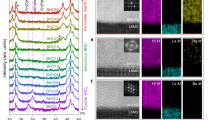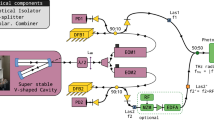Abstract
IN a letter to NATURE of October 27, p. 618, in which we gave a complete list of the lines belonging to the hafnium spectrum between 2500 and 3500 Å.U., we announced a detailed examination of the remaining part of the spectrum which can be obtained photographically. The result of this examination will be found in a paper, now in the press, which will appear shortly in the Math. Phys. Proceedings of the Royal Danish Academy. This paper contains a list of all the hafnium lines (about 800) found between 7300 and 2300 Å.U., together with a detailed discussion of our methods and results. In the meantime we give here a list of the strongest lines in the region between 7300 and 3500 Å.U. Some of these lines (denoted in the table with an asterisk) have already been published at the Gothenburg meeting of Scandinavian Naturalists, where, on July 13, we presented a list of some 20 characteristic hafnium lines between 4500 and 3500 Å.U.
This is a preview of subscription content, access via your institution
Access options
Subscribe to this journal
Receive 51 print issues and online access
$199.00 per year
only $3.90 per issue
Buy this article
- Purchase on SpringerLink
- Instant access to full article PDF
Prices may be subject to local taxes which are calculated during checkout
Similar content being viewed by others
Author information
Authors and Affiliations
Rights and permissions
About this article
Cite this article
HANSEN, H., WERNER, S. The Optical Spectrum of Hafnium. Nature 112, 900–901 (1923). https://doi.org/10.1038/112900b0
Issue date:
DOI: https://doi.org/10.1038/112900b0



